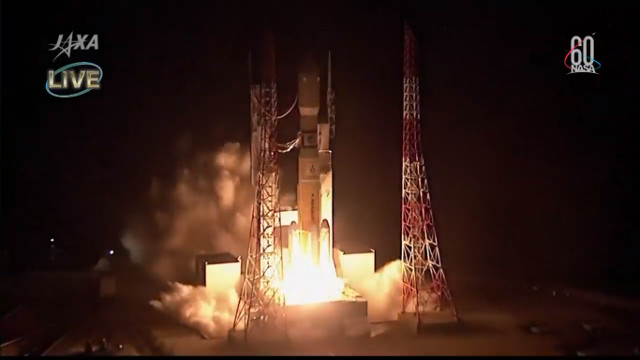
A little while ago the HTV-7 spacecraft blasted off atop a H-IIB rocket from the Tanegashima space center in Japan for a resupply mission to the International Space Station. About fifteen minutes after the launch, the cargo spacecraft separated regularly from the rocket’s last stage, entered its preliminary orbit and deployed its solar panels and navigation antennas.
The HTV-7 (H-II Transfer Vehicle) spacecraft is also called Kounotori, which means white stork. It carries a total of about 5,500 kg (12,125 lb) of cargo to the International Space Station between the pressurized and non-pressurized section. There are supplies such as water and food for the crew as well as new instruments, scientific experiments, various hardware and some CubeSat-class nanosatellites to be put into orbit from the Station.
The transport of new lithium-ion batteries and related accessories that will replace old batteries continues: it started with the previous mission, it includes 6 more of them. They’ll be used to accumulate the energy obtained from one of the solar panel blocks of the International Space Station. For this reason, they’re not only a considerable part of the cargo but also a very important part for the Station’s maintenance.
A big news is the HTV Small Re-entry Capsule (HSRC), a small capsule that’s basically a miniaturized version of the HTV-R under development by the Japanese space agency JAXA. The HSRC will enable to test the return to the ground by splashing down off the south of Japan returning samples from the International Space Station. It can hold up to 20 kg of materials that are reduced to 5 kg if they need to be refrigerated and therefore a freezer must be added to the capsule.
The HTV-7 spacecraft went into a route that takes about five days to reach its destination so it’s scheduled to arrive at the International Space Station next Thursday, around 11.54 UTC. It will be captured by the Canadarm2 robotic arm, like the American cargo spacecraft Dragon and Cygnus.

